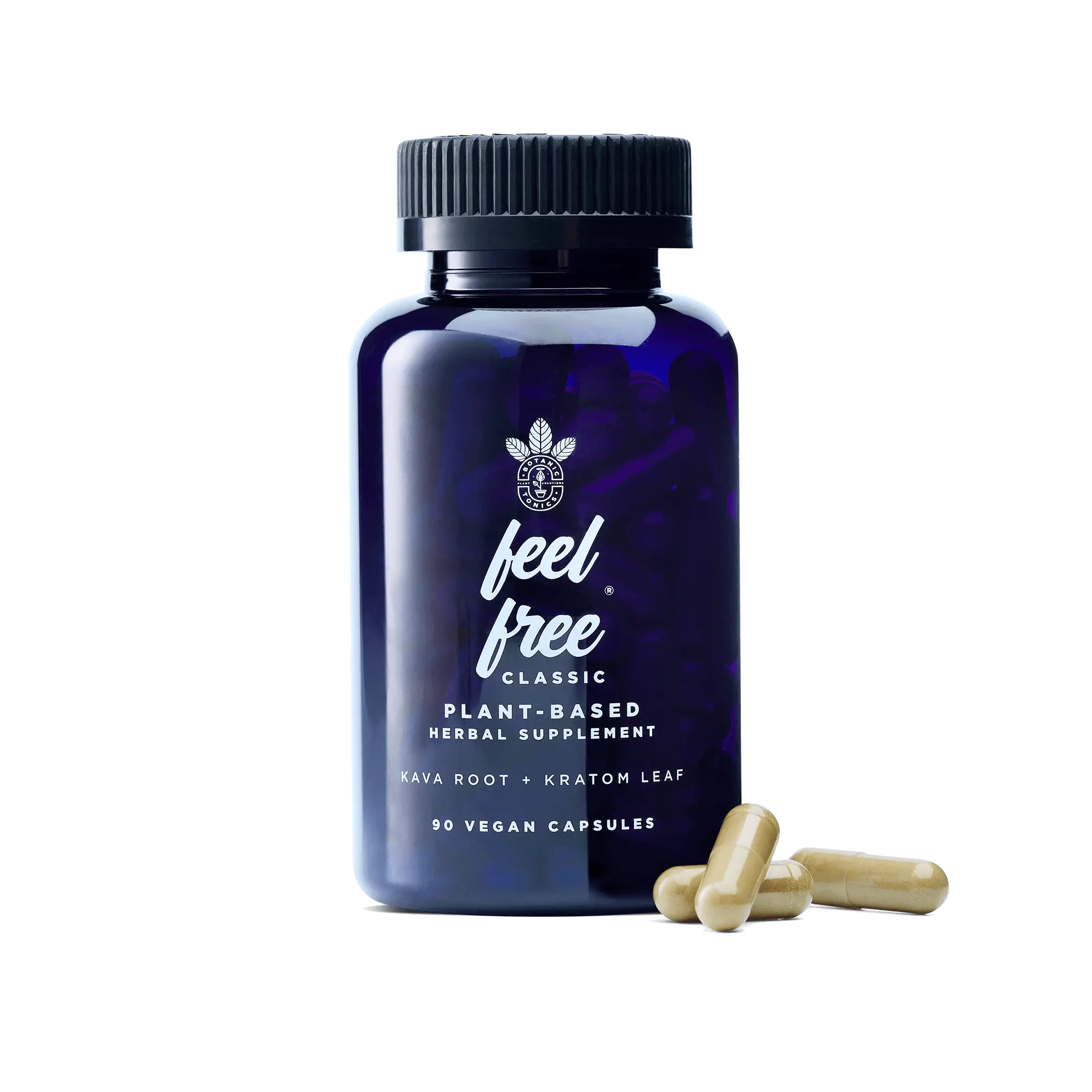Can You Mix Kava and Kratom Together?
You’ve likely seen both kava and kratom as you’ve browsed the aisle of your local health food store. Or maybe you already use these products to help you relax and stay focused at work.
Whether you’re an avid kava consumer or a kratom connoisseur, you may be wondering, “Can you mix kava and kratom together?”
While consuming these ancient herbal remedies together is safe, there are some potential side effects to be aware of before you try the combination for yourself.
What Is Kava?

Kava kava, typically shortened to kava, is an herbal extract derived from the Piper methysticum plant, found in the South Pacific. Believed to have originated in Melanesia, this plant is actually in the same family as pepper and has many culturally significant uses. People in Papua New Guinea, Hawaii, Tonga, and Fiji have used kava in a range of gatherings and ceremonies, including:[1,2]
- Weddings
- Religious rites
- Reunions
- Celebrations of new leaders or chiefs
- Welcoming celebrations
- Before heading into battle
Groups typically consumed kava during these social events because of its calming effects, making it easier for community members and attendees to relax and enjoy themselves.[2] They often used their hands or mouths to crush the root and mix it with coconut milk or water—in some areas, this is still a popular method for enjoying the effects of this powerful rhizome.
The mellow, relaxed feelings that kava produces explains its use over centuries in the Pacific Islands, as well as its recent uptick in popularity in the U.S., although methods of consumption may have changed. Today, you can find kava recipes in the form of tonics, capsules, tinctures, and tea.
However, before mixing the two, it’s important to understand the properties of kratom vs. kava.
What Is Kratom?

So, what is kratom used for? Kratom, the Mitragyna speciosa plant, is a member of the coffee family and has a history of use in Southeast Asia—particularly Indonesia, Malaysia, and Thailand.[3] It shares stimulant properties similar to coffee but without caffeine or theophylline.
Kratom can be found across the United States in the form of capsules, tablets, and loose powders.[3]
The Benefits of Mixing Kava and Kratom
Kava kava has made a recent splash in the mainland United States, gaining popularity amongst health-food fans and trendsetters alike.
Due to its stimulant properties, kratom yields some of the same kava benefits. When you enjoy kava and kratom together, you may notice combined effects like:
- Social Ease
- Mood lift
- Focus Aid
- Chilled Energy
In combination, they can help calm your mind while boosting your mood.
What are the Potential Side Effects of Mixing Kava and Kratom?
While a tincture or tonic that includes both kava and kratom can allow you to take advantage of the power of both plants, there are some potential side effects you’ll want to keep in mind.
Namely, the feel-good effect of these herbal remedies can actually be dangerous if mixed with drugs that aim to sedate your central nervous system, like MAOIs and SSRIs.[4] So, this is not the combination for you if you take antidepressants or other medications.
Also, steer clear of these products if you’re pregnant since there isn’t enough research to give you the go-ahead.[5]
Enjoy the Effects of Both Kava and Kratom with feel free

Kava and leaf kratom may work together to offer the perfect relaxing, focus-enhancing tonic—and Botanic Tonics is a reputable manufacturer you can trust.
We know that when it comes to plant-based ingredients, quality is crucial.
Check out what the buzz is all about by trying our feel free CLASSIC tonic or feel free capsules today.
Prefer a simpler, thoughtfully balanced option?

feel free Kava Maté is a first-of-its-kind tonic featuring noble kava root and yerba mate. This combination supports smooth energy and a lifted mood while helping you stay grounded.*
Explore the product →
Sources:
- University of Hawaii at Manoa Library. Traditional Pacific Island crops: kava. https://guides.library.manoa.hawaii.edu/paccrops/kava
- The University of Texas at El Paso. Kava. https://www.utep.edu/herbal-safety/herbal-facts/herbal%20facts%20sheet/kava-kava.html
- News Medical Life Sciences. Kratom: A dangerous or beneficial plant? https://www.news-medical.net/news/20220623/Kratom-A-dangerous-or-beneficial-plant.aspx
- Mental Health America. Kava. https://www.mhanational.org/kava
- Science Direct. Kava. https://www.sciencedirect.com/topics/biochemistry-genetics-and-molecular-biology/kava















